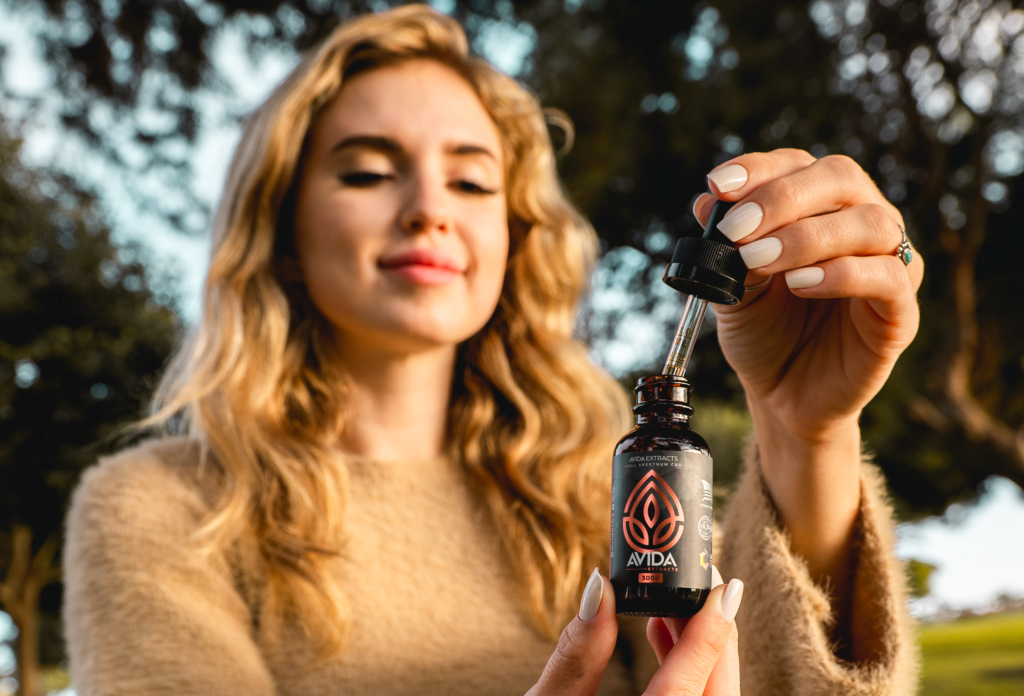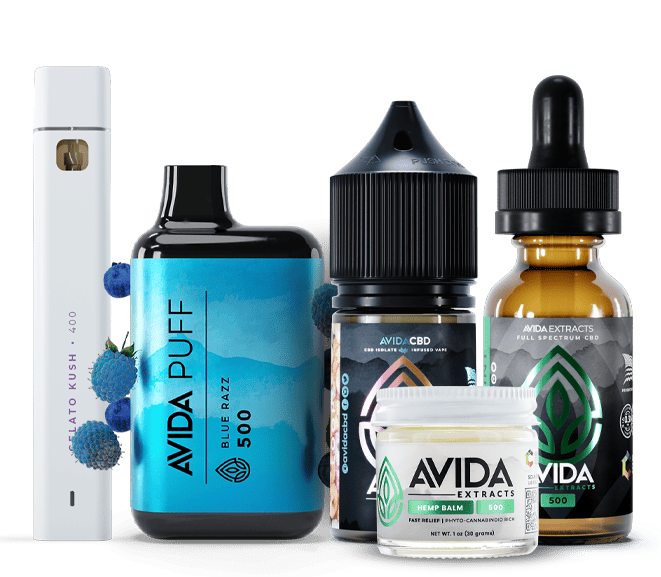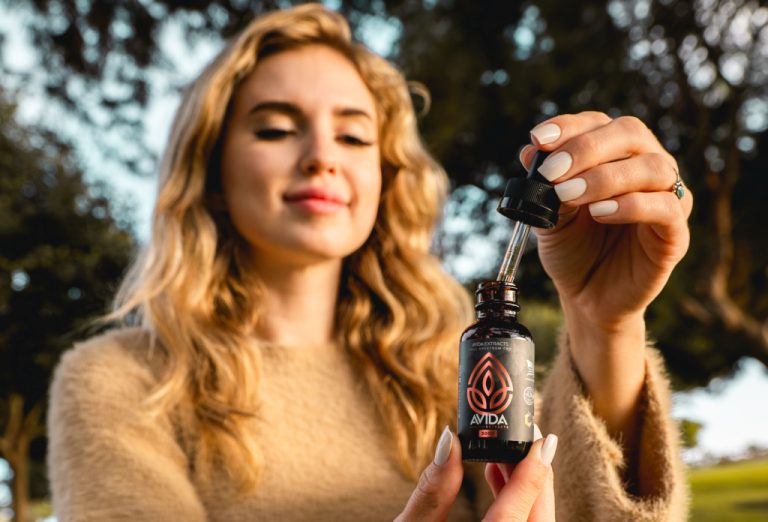When it comes to CBD, low doses are typically more stimulating, while a higher dose of CBD may be generally more sedating or anxiogenic. These different effects are attributed to what’s known as the CBD biphasic dosing curve.
Understanding more about the biphasic effects of CBD can offer a better understanding of the various factors that influence the effects you experience when taking CBD. Ultimately, this will help you determine the best dose of CBD for your personal needs.
Key Takeaways
- CBD contains a biphasic dose-response curve, which means low doses can be stimulating and higher doses may be more sedating or anxiogenic.
- Finding the best CBD dose is a process that involves starting with a low dose and gradually increasing it until you experience the effects you desire.
- The effects of CBD are influenced by consumption methods, with tinctures, edibles, and inhalable CBD products containing different absorption rates, onset times, and duration of effects.
What is the Biphasic Dosing Curve?
The biphasic dosing curve is associated with what’s known as the biphasic effect, where different doses of a drug can cause opposite effects. With CBD, low doses are known to have stimulating effects, while moderate to high doses can have more sedative-like effects [1],[2].
Understanding the biphasic dosing curve is important to determine your ideal dose so you experience the effects you’re looking for taking CBD. Keep in mind, however, that CBD affects everyone differently, based on things like body weight and metabolism.
Taking high doses of CBD might not necessarily provide more potential benefits. Instead, it could cause effects you aren’t interested in and be a waste of CBD. The biphasic dosing curve all comes down to the right balance and determining the best dose for your personal needs.
Determining the Best Dose of CBD For Your Needs
 Knowing the biphasic nature of CBD is vital for finding your perfect dose, the next step is knowing how to determine your ideal dose. When first taking CBD, it’s widely recommended to start low and go slow. This means starting with a small dose and gradually increasing it over time.
Knowing the biphasic nature of CBD is vital for finding your perfect dose, the next step is knowing how to determine your ideal dose. When first taking CBD, it’s widely recommended to start low and go slow. This means starting with a small dose and gradually increasing it over time.
Doing so allows you to gauge the effects you feel at a certain dose. Keeping track of the effects you feel with low doses of CBD can then be compared to subsequent higher doses. Because people respond to CBD differently, fine-tuning your dose is essential [3],[4]. Some people feel the effects of CBD immediately, while it might take others days or weeks to notice any effects. So, how can you tell if it’s working? You can determine CBD is working when you notice improvements in specific symptoms or feel an enhanced sense of general well-being.
This is why it’s so important to keep track and record the precise amount of CBD you take and note any changes you feel. While it might take some time, this will ultimately help you find the best dose based on your unique needs.
Before starting a CBD routine, it can be helpful to talk to a healthcare provider. This is especially important if you’re taking other medications, as CBD does pose certain drug-drug interactions. They can also offer insight into how health conditions and interactions with other medications may influence your ideal CBD dose.
Common CBD doses vary as much as the people who take CBD. A daily CBD dose can range from 15-25mg up to 900mg or more depending on the desired effects of the consumer. That said, a common starting ground is typically 10-25mg [5].
Using Different CBD Consumption Methods for Optimal Dosing

Taking a CBD tincture, consuming an edible like CBD gummies, and vaping or smoking CBD all have a unique absorption rate (how much CBD enters the body), ultimately influencing the overall experience.
Sublingual CBD Consumption: Tinctures, Drops, and Sprays
CBD tinctures and drops are the most commonly used CBD products. They’re designed for sublingual application, meaning they’re put under the tongue and held for 1-2 minutes before being swallowed.
Sublingual consumption typically has an onset time of 25-30 minutes, with effects that last 2-3 hours. While absorption rates vary, research shows it can be as high as 35%.
Oral CBD Consumption: Edibles and Capsules
CBD edibles and capsules are another popular CBD consumption method, however, absorption rates are generally low. Research shows oral consumption of CBD products has an absorption of around 13-19% only as a major fraction gets metabolized by the liver [6].
This is because orally consumed products must make their way through the digestive tract and liver before being absorbed by the bloodstream. This is known as the first-pass effect and makes a huge difference in the overall experience.
Not only does it decrease how much CBD is absorbed but also delays onset time up to 1-2 hours. The effects, however, last up to 6-8 hours, which is the longest of all consumption methods.
There are ways to improve the bioavailability of orally consumed products, though. CBD is fat-soluble, meaning it doesn’t dissolve in water. When you consider the body is made up of 70% water, it makes sense why absorption rates are so low.
When you consume oral products with healthy, high-fat foods such as avocados, fatty fish, dark chocolate, and nuts you may help increase how much CBD is absorbed by the body. One study found that in people who took CBD with a high-fat meal, the amount of CBD in the bloodstream was four times higher than those who took CBD on an empty stomach [7].
Inhalable CBD Consumption: Vaping and Smoking CBD
Inhalable CBD products, such as CBD vapes and flower may offer the highest bioavailability and onset time. When CBD is inhaled via smoke or vapor, effects are felt almost immediately. This is because once CBD is absorbed by the lungs, it immediately makes its way into the bloodstream.
The absorption rate of inhaled CBD can be as high as 45%, as it bypasses the first-pass metabolism. While bioavailability is high and onset time is quick, the effects of inhaled CBD products tend to last the shortest of all consumption methods (1-2 hours) [8].
The rapid effects and higher bioavailability of inhalable CBD consumption make it the top choice for consumers interested in immediate effects.
Potential Side Effects of Different CBD Doses
Different doses of CBD may cause potential side effects. Taking too much could cause potentially adverse effects while taking too little might not work at all. Some refer to the perfect CBD dose as the “Goldilocks Zone,” not too much, not too little, but the perfect amount for your personal needs [9].
Taking too much CBD may lead to side effects like drowsiness, diarrhea, and mood changes. In some cases, high daily doses of CBD may lead to liver damage [10].
On the other hand, taking a dose of CBD that’s too small might not make you feel anything. Ultimately, this can make people assume CBD doesn’t work or isn’t the right choice for them.
This is why it’s vital to remember to start low and go slow. Take your time to gauge your ideal dose and avoid potential side effects [11].
While some people might feel the effects of CBD the first time they take it, it typically takes time to gauge your ideal dose. If you don’t feel anything right away, don’t give up. Your ideal dose of CBD is out there. It just takes some time to discover it.
Wrapping Up
Understanding the biphasic dosing curve and how it affects CBD dosage is important to get the most out of your experience and minimize potential side effects. Remember, the biphasic effect of CBD means large doses can make you sleepy or may increase anxiety and a small dose can increase energy.
By taking the start low and go slow approach, monitoring your body’s response, and talking to a healthcare professional, you’ll find it helps considerably when determining the best dose of CBD for your unique needs and desires.
Don’t forget that the CBD consumption you choose influences its bioavailability, onset time, and how long the effects last. Taking CBD isn’t a one-size-fits-all approach. It requires time, careful consideration, potential adjustments, and patience.
Frequently Asked Questions
What is a biphasic dosing curve?
A biphasic dosing curve shows that low doses of CBD have stimulating effects, while moderate to high doses can have sedative effects or may increase your anxiety.
How can I determine my optimal CBD dosage?
You can determine your optimal CBD dosage by starting with a small amount and gradually increasing it over time while monitoring how your body responds.
How does the method of CBD consumption affect its effectiveness?
The method of CBD consumption influences its bioavailability, impacting how much CBD is absorbed in the body, onset time, and duration of effects.
What are the potential side effects of excessive CBD consumption?
Excessive consumption of CBD can lead to side effects such as drowsiness, changes in alertness, digestive issues, mood changes, and liver injury.
[1] Linares, I. M. P., Zuardi, A. W., Pereira, L., Queiróz, R. H. C., Mechoulam, R., Guimarães, F. S., & De Souza Crippa, J. A. (2019). Cannabidiol presents an inverted U-shaped dose-response curve in a simulated public speaking test. Revista Brasileira De Psiquiatria, 41(1), 9–14. https://doi.org/10.1590/1516-4446-2017-0015
[2] Zhornitsky S, Potvin S. Cannabidiol in humans-the quest for therapeutic targets. Pharmaceuticals (Basel). 2012;5(5):529-552. https://pubmed.ncbi.nlm.nih.gov/24281562/
[3] Millar, S. A., Stone, N. L., Yates, A., & O’Sullivan, S. E. (2018). A Systematic review on the pharmacokinetics of cannabidiol in humans. Frontiers in Pharmacology, 9. https://doi.org/10.3389/fphar.2018.01365
[4] Millar SA, Stone NL, Bellman ZD, Yates AS, England TJ, O’Sullivan SE. A systematic review of cannabidiol dosing in clinical populations. Br J Clin Pharmacol. 2019;85(9):1888-1900. https://pubmed.ncbi.nlm.nih.gov/31222854/
[5] Larsen C, Shahinas J. Dosage, Efficacy and Safety of Cannabidiol Administration in Adults: A Systematic Review of Human Trials. J Clin Med Res. 2020;12(3):129-141. https://pubmed.ncbi.nlm.nih.gov/32231748/
[6] Perucca E, Bialer M. Critical Aspects Affecting Cannabidiol Oral Bioavailability and Metabolic Elimination, and Related Clinical Implications. CNS Drugs. 2020;34(8):795-800. https://pubmed.ncbi.nlm.nih.gov/32504461/
[7] Birnbaum, A. K., Karanam, A., Marino, S. E., Barkley, C. M., Remmel, R. P., Roslawski, M., Gramling-Aden, M., & Leppik, I. E. (2019). Food effect on pharmacokinetics of cannabidiol oral capsules in adult patients with refractory epilepsy. Epilepsia, 60(8), 1586–1592. https://doi.org/10.1111/epi.16093
[8] Chayasirisobhon S. Mechanisms of Action and Pharmacokinetics of Cannabis. Perm J. 2020;25:1-3. https://pubmed.ncbi.nlm.nih.gov/33635755/
[9] Dance A. As CBD skyrockets in popularity, scientists scramble to understand how it’s metabolized. Nat Med. 2019;25(10):1462-1464. https://pubmed.ncbi.nlm.nih.gov/31595086/
[10] Huestis MA, Solimini R, Pichini S, Pacifici R, Carlier J, Busardò FP. Cannabidiol Adverse Effects and Toxicity. Curr Neuropharmacol. 2019;17(10):974-989. https://pubmed.ncbi.nlm.nih.gov/31161980/
[11] Lucas CJ, Galettis P, Schneider J. The pharmacokinetics and the pharmacodynamics of cannabinoids. Br J Clin Pharmacol. 2018;84(11):2477-2482. https://pubmed.ncbi.nlm.nih.gov/30001569/
